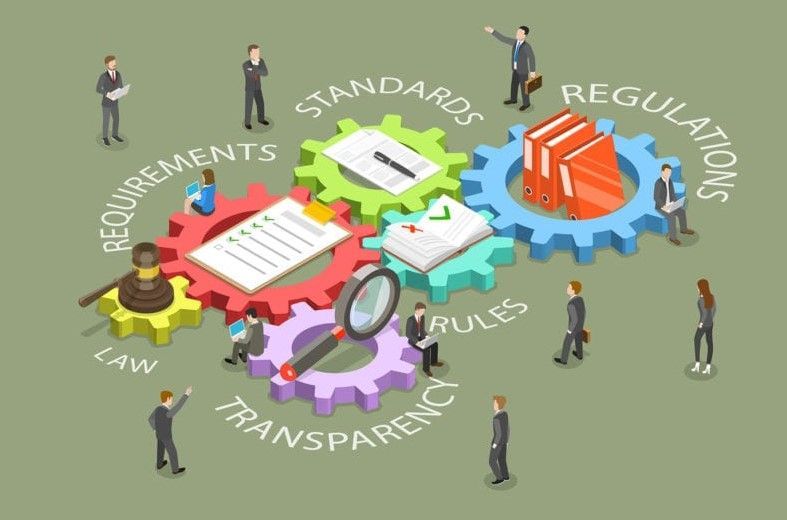From Zoom to Vroom: Finding Another Gear
June 17, 2025
Six months ago, many of us were struggling with remote platforms. Now, even though we’re still learning how to handle the technology, it’s time to push forward. Sellers can use powerful new tools to grow their toplines—and that includes meeting new challenges with imagination and optimism.
The new mindset in business development is to shift into a higher gear: “Virtual” isn’t something that gets in the way of selling and marketing. Instead, it’s a way to open up new opportunities. For example, team selling can be much easier to use and much more effective than in the past. And that goes for coaching, too. Plus, with less time taken up for travel, you can brainstorm new ways to improve your selling capabilities and put them in place, including processes, skills, and even new support tools. One organization we know moved to a new business model.
How is team selling better? It offers more flexibility, is much less expensive, and, as a result, often much more productive. Teams can be used remotely to:
- Back up your sales generalists with product specialists, market experts, or technology gurus on any remote platform call at specific times. No need for them to travel to a site, incurring costs and even wasting their time as they wait to participate. Last-minute cancellations will have little to no cost consequences.
- Conduct more targeted demonstrations —plant tours, for example. Ask prospects ahead of time what their specific goals and challenges are. That way you can emphasize those concerns during video tours and avoid showing the entire plant, especially processes and equipment prospects aren’t interested in. Some companies are creating spaces in offices and manufacturing plants dedicated to video conferencing. These rooms can include product samples to be shown as needed. (We know how to help you make the most of those types of meetings.)
- Expand the bandwidth of your sales force. With more agile support resources so readily available, salespeople trained as product specialists can now be trained to sell all products or services. Here are two ways to make that happen:
- Use a sales process that’s more persuasive than educational.
First , ask the right questions in the right way to identify a customer’s needs, especially ones the customer might not even be aware of. Polls during a meeting or beforehand can be effective in zeroing in on the most important concerns. Then , based on what you hear, it’s time talk up your company and your products—but always keeping what you’ve learned about the customer front and center.
Key Point: Do not use a canned pitch. Canned pitches treat every prospect or customer the same, and they are all about the seller. Only a persuasive sales process can flip that dynamic to make a call about the buyer, not the seller.
Not sure what persuasion means for your business? Just get in touch—at no cost. We can help you figure it out.
- Use product specialists more effectively more often. But be sure to use them for the right reasons at the right times. In other words, begin to build trust by asking the right questions, before focusing on the products. Product specialists are also valuable as backups to take questions and to provide clarification. They don’t always have to present. Be sure to involve them in planning the call. One of the great benefits of this approach is that sellers who were focused on single product line can now take on more responsibility to represent a greater portion of the product offering.
- Expand the bandwidth of your customers and prospects. More key people from a prospect or customer’s team can be involved. They can be located just about anywhere, and they can help answer questions the initial prospect participants can’t. This often results in more buy-in from a larger group simply because they’ve been recognized as important participants in decision making.
- Leverage sales coaching with teams. Sales coaches and trainers have always delivered value, though often without going into the field. But now a sales coach can deliver value during a sales call just as effectively but at a much lower cost because they can participate without travelling. For years we’ve accelerated sales by coaching in the field. We’ve quickly learned that coaching works just as well in the virtual world. Here are a few roles that we take on as coaches and that work just as well on-line as in-person.
- Observer. While your salespeople are presenting, we read the room, listen for unasked questions that need to be asked, notice who’s paying attention and who’s not, and make sure questions that aren’t addressed in the moment are not forgotten.
- Leader. Sometimes calls start going off the rails. We watch for this and can often take action more quickly and more effectively than the sales team, whose members are busy playing their roles during a presentation. This role is more facilitation than leading. You or your sales manager leads. The value of a coach here is that you can focus on participating while the coach keeps the meeting on track and moving forward. In some instances, we have also led calls at the request of our clients. There are specific situations where that can be productive,
Pivot to a new business model. Perhaps the most inspiring pivot to a new business model that we’ve seen in these unprecedented times comes from a not-for-profit organization, Feed My Starving Children (FMSC), whose important work we’ve written about before. Before the pandemic forced new operational procedures on businesses and organizations, Feed My Starving Children was packing and shipping 30 million meals a month to partner organizations in 70 countries. FMSC’s partners distributed these specially formulated meals to children on the brink of starving to death every day and paid only for transportation.
Then the pandemic forced FMSC to shut down its ten packing facilities. Due to shelter-in-place and state regulations, the some 1.4 million volunteers who usually help pack the meals could no longer do so.
And the absence of volunteers impacted FMSC’s business model in another fundamental way: It upended its long-held philosophy of never using machine packing. One reason FMSC avoided machine packing is that the volunteers donate more than their time to pack the meals; they also contribute funds to cover the cost of the meals they pack. This generosity makes it possible for FMSC to provide the meals to partner missionary organizations at no cost. If FMSC used machine packaging, the organization would likely not only lose most of the volunteer donations but also incur the additional costs of paying for the meals itself and, of course, for machine packing.
Key Point: Considering the impact of those several challenges, changing the business model and having product rolling off the line in just nine days was even more remarkable. It also demonstrates that making significant changes in a short time is possible.
Here’s what happened. Thanks to a Minnesota prison that stepped up to pack meals and the efforts of a supplier to begin producing meals by machine in record time, FMSC immediately replaced half of the needed volume, or 15 million meals per month. Still, even though packing facilities are up and running again, social distancing requirements have limited the number of volunteers who can work at any one time. The new business model still developing. The monthly run rate is now 21 million meals. The focus has now turned to fund raising since estimated annual demand has soared an additional 100 million meals. Fortunately, machine-packing suppliers have the capacity.
And please consider making a donation. One dollar pays for about three machine-packed meals.
To learn more, just visit Feed My Starving Children and learn the ways in which you might help.
All in all, we see the future as positive because we’ve seen how the current challenges can open up opportunities. We hope we’ve helped you to see opportunities for your business as well. If you’d like some help with moving your business development “from Zoom to Vroom,” please contact us at 847-446-0008 or pkrone@productivestrategies.com.
The post From Zoom to Vroom: Finding Another Gear appeared first on Productive Strategies, Inc..










